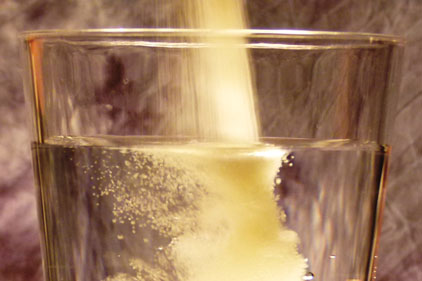Accordin to Audrae Erickson, president of the Corn Refiners Association, "This latest article by Dr. Goran is severely flawed, misleading and risks setting off unfounded alarm about a safe and proven food and beverage ingredient. There is broad scientific consensus that table sugar and high fructose corn syrup are nutritionally and metabolically equivalent. It is, therefore, highly dubious of Dr. Goran--without any human studies demonstrating a meaningful nutritional difference between high fructose corn syrup and sugar--to point an accusatory finger at one and not the other. Dr. Goran commits the most fundamental of research errors: Just because an ingredient is available in a nation's diet does not mean it is uniquely the cause of a disease.
"If this study shows anything, it is that there is an association between body mass index (BMI) and diabetes prevalence. Take for example, Japan, where the average BMI is 22.59, and Mexico, where the average BMI is 27.59. Even though Japan consumes more HFCS every year than Mexico, the prevalence rates of diabetes in Japan are about half of Mexico. This example alone shows that Dr. Goran's hypothesis is totally flawed.
"This is not the first time HFCS detractors have tried to use statistical analysis to 'suggest' a unique causal link between HFCS and obesity. The co-authors of the infamous 2004 Bray and Popkin paper, which Dr. Goran relies on, now admit they reached an erroneous hypothesis. As one author of the 2004 paper confirmed, 'All sugar you eat is the same, that's what we know now that we didn't know in 2004.'
"Rigorous, credible scientific inquiry into the health effects of sweeteners is essential to advancing our understanding of a healthy diet. But Dr. Goran's latest quest to condemn high fructose corn syrup crosses the line from science to advocacy.
"The bottom line is this is a poorly conducted analysis, based on a well-known statistical fallacy, by a known detractor of HFCS whose previous attack on the ingredient was deeply flawed and roundly criticized. The common sense message for consumers to understand is to watch their intake of all extra calories, including all added sugars."
Statement attributed to James M. Rippe, M.D., Professor, BioMedical Sciences, University of Central Florida (and consultant to CRA)
"Diabetes is a complex disease with many underlying factors. It is highly unlikely that one component of the diet is uniquely related to diabetes. There are well-established links between obesity and diabetes. That is where we should be focusing our attention rather than vilifying one component of the diet."
Five Major Reasons the Goran Study is Flawed and Unreliable
1. HFCS and sugar are nutritionally equivalent. There is broad scientific consensus that HFCS and table sugar are nutritionally and metabolically equivalent, and the American Medical Association has concluded that HFCS is not a unique cause of obesity. There is absolutely no scientific or medical basis for Dr. Goran to distinguish HFCS from table sugar in terms of human health effects.
2. Glucose is wrongly compared to fructose. The studies that are cited by Dr. Goran to justify his belief that fructose is dangerous are largely studies that compare pure fructose to pure glucose, neither of which is consumed in isolation in a normal diet. HFCS and table sugar contain about equal amounts of glucose and fructose--not fructose or glucose, alone. When the same measurements cited by Dr. Goran are made comparing HFCS to sucrose, all of the differences disappear. Stating that fructose and glucose are treated differently in the liver is misleading and irrelevant. Humans almost always consume these two simple sugars together, not in isolation, and both HFCS and table sugar contain approximately equal amounts of both.
3. Dr. Goran's study is based on an "ecological fallacy". It associates a characteristic of a large group (diabetes) to a single factor (high fructose corn syrup availability), with no clear evidence of causation. Comparing levels of HFCS "availability" to a disease with multiple contributing factors (diabetes) is an extremely weak association, particularly given the study's grandiose claim of a global significance. In fact, Dr. Goran and his co-authors are forced to admit in their own paper that the arguments they make "could be subject to ecological fallacy" and that the approach they have taken "might introduce errors."
4. Goran's previous HFCS study was shown to be deeply flawed. For a prior study purporting to find higher than expected fructose in HFCS sweetened drinks, Dr. Goran used the wrong laboratory test methodology. This flawed approach falsely inflated the levels of fructose and glucose in HFCS and in HFCS-sweetened products. Dr. Goran later admitted that he and his team "are not disputing the sugar composition of HFCS" and that there were errors caused by the limitations of the method used in the study. Dr. Goran's previous study has been roundly criticized.
5. Isolating one aspect of a national diet and implying that it is a singular cause of diabetes is unwise, unscientific and highly speculative. Diabetes is a complicated condition just like obesity. The scientific community would not support this kind of approach, linking the availability of one component of the diet to increased risk of diabetes. For example, drawing from the study's own data, Japan consumes more high fructose corn syrup every year than does Mexico. Yet the rates of diabetes in Japan are about half of what you see in Mexico. There are also epidemics of obesity and diabetes in many countries where no high fructose corn syrup is even being used. Thus, to make a comparison between high and low "availability" of HFCS and diabetes in certain countries is simply misleading. And Dr. Goran fails to put HFCS and sucrose consumption into proper global perspective: sucrose comprises more than 90% of annual sweetener consumption worldwide.
